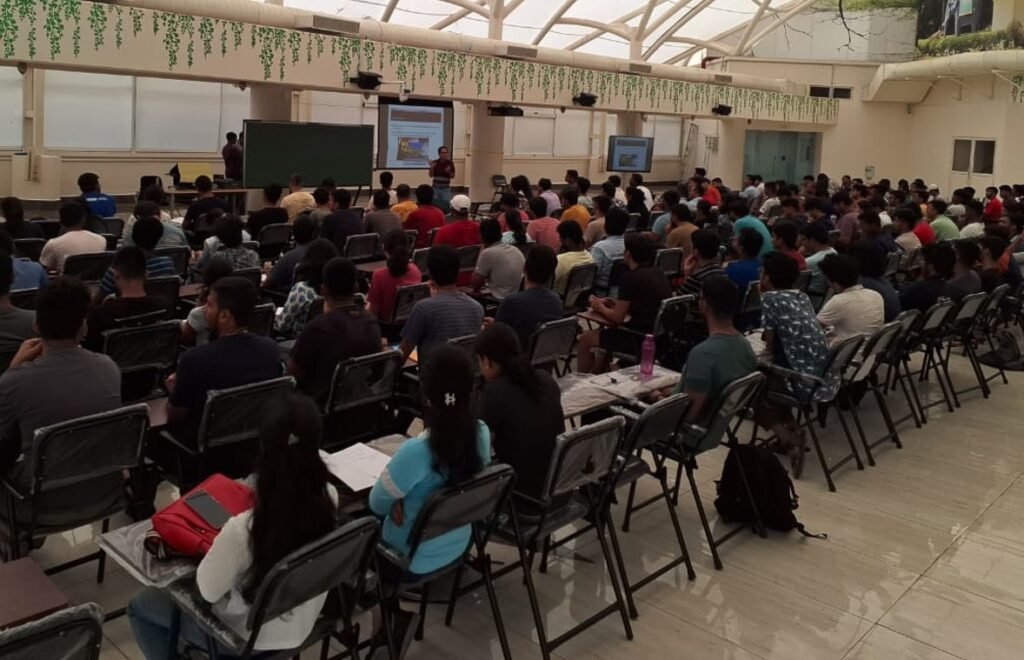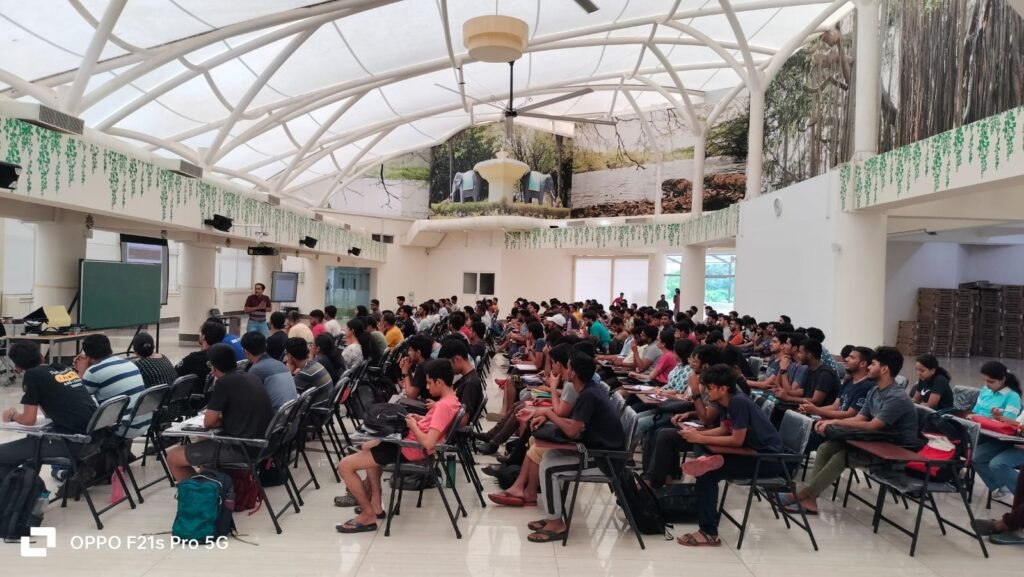With a huge class and an unconventional classroom setup, it was a rather unusual day at IITM. The Terrace hall on the second floor of the Main Canteen was buzzing live. Around 246 students had gathered for the Climate Economics course (HS5760) handled by Santosh Kumar Sahu, Associate Professor, Humanities and Social Sciences.
Climate studies are on demand
Climate issues have taken center stage. To combat it, new technologies and newer job profiles are emerging. At present there is a dearth of talent for these new skill sets. About 20% of India’s workforce is employed in green jobs, but still there is a demand-supply gap of 2%. To seize this opportunity and transition to a sustainable future, a skilled workforce is essential. Despite increased interest among students, the availability of educational programs that meet industry expectations is limited. This is where the Climate Economics course fits in, as it offers a broader perspective on the intersection of economics and environmental issues. By integrating concepts from multiple disciplines, it not only enriches the learning experience but also prepares students to tackle real-world problems in innovative ways.
The course has been over registered and the rejection rate reached 1:2, prompting the institute to thus expand the class size. What started with just 60 students in 2021 has now grown to over 246, with about five on the waiting list. Prof Sahu explained, “In recent years, sustainability and climate have become major discourses both at the university and government levels. The field offers students with multifarious opportunities to excel. However, to my knowledge, there aren’t any specific courses on climate economics. They may cover climate change and sustainable development but often overlook the economic aspect. This gap is one reason, why I believe students have shown a strong interest for the course,” explained Prof. Sahu.
A collaborative learning environment

However teaching a large class comes with its fair share of issues, right from the design of course to its effective delivery. This climate economics class has students ranging from humanities, civil engineering to biotechnology and computer science engineering. “It is a challenge to effectively engage students and keep the course competitive enough to retain their interest. The onus falls on me to bring in examples that are relevant to each discipline,” pointed Prof. Sahu. The course material was altered to suit this audience. Rather than just dwelling on theoretical concepts, it has been upgraded with a blend of text book content, recent research work and group projects. The new hall too aids the delivery. In smaller, traditional classes, the atmosphere tends to be more rigid. The fixed furniture constrains breaking to groups and having conversations. In contrast, the new open setup provides students greater opportunity to interact and collaborate, disrupting construed norms around a classroom atmosphere. This is reflected in higher participation and attendance percentage. “I had some concerns at the beginning related to retention. In the first three weeks, it can be hard to tell if students will stick around. Fortunately, they’ve all stayed engaged, and no one has dropped out. In fact few more joined,” detailed Prof Sahu. Along with his dedicated team of PhD students, Prof. Sahu is set to evaluate this experimental class’ assignments soon.
Utilizing technology for effective delivery
Just like designing the course content, the logistics required to handle such a huge class is also a daunting task. Content delivery must be amplified effectively across a large hall, reaching even to the farthest corner. “That is a big challenge but I got excellent support from the admin team. Huge screens and interactive boards were installed along with good sound systems. They were always present fifteen minutes before each class to ensure that the entire setup was up and running,” highlighted Prof. Sahu.
As interest in climate issues continues to expand, it’s clear that courses like these will play a pivotal role in preparing the workforce for the demands of a green economy. Going forward all courses will require a multi-dimensional and inter-disciplinary approach, necessitating larger class sizes. Using the Terrace hall at IITM has not only redefined the learning environment but has also set a precedent. The impressive enrollment numbers and high retention rates reflect that a collaborative atmosphere encourages student interaction and participation. It paves way for more dynamic educational experiences that break away from traditional classroom norms, ultimately enriching the academic journey for students at IITM.



